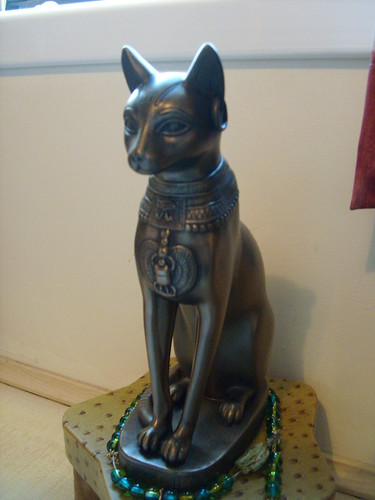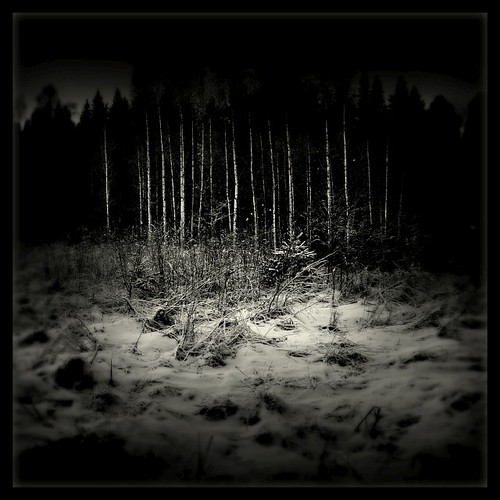
- Egyptian Goddess Bast
When and where exactly the cats were first domesticated is unknown; its because various breeds of cats were originated and tamed in different parts of the globe. There are some evidences showing that cats were perhaps first domesticated in Pre-Columbian Florida. Some believed that the Lake Dwellers kept house cats about 2000 B.C. Sanskrit writings 3,000 years old speak of cats as pets in India. Nonetheless, it was in Egypt that cats first came to the attention of what was then the civilized world.
The Egyptian household cats appear to have been closely related to the African wild cats, Felis ocreata, and Felis lybica. The Egyptian Mau cats looked like the Abyssinian, yet a little larger. They guard the field near the Nile from rodents. The Egyptian cats sanctified the cat goddess Bast, sometimes Pasht, Ubasted, or Bubatis. She is depicted by a cat’s head and a woman’s body. She is also the goddess of moonlight, fertility, wisdom, and hunting. Thus, one of the six major cities of Lower Egypt, Bubastis, was dedicate to her. The Bible also mentions the city by the name Pisbeseth, in Ezekiel 30; 13, 17.
Moreover, according to Herodotus, the murder of cats could be punishable to death in Egypt. When a cat dies, the owner mourns and the cat’s body would be mummified. During the embalming of cats, an embalmed mouse is placed next to the cat. Over 300,000 cat mummies were uncovered in 1890 in Tel Basta while a few of them can be seen in some American and Egyptian museums. They were still enclosed in their cases of engraved wood or wrapped in colored, intertwined straw, and wrapped in rich bandages of different colors. Faces were covered with masks of which the nose, eyes, ears, and whiskers can be seen. But, these sacred corpses were later used as fertilizers, most particularly the belief fade out. The worship of the Bast gradually began to decline after 350 A.D., and completely forgotten after the imperial decree to decline after 390 A.D.
However, during the Dark Ages and until the past two centuries, gave way to spread hatred and killing, because cats were associated with the old religion, that’s during the Pre-Christian Polytheism and Animism, and Witchcraft. Demonologists suggest that cats were the favorite familiars of witches. Thus, cats were put on trial before their owners. Some were burned alive. Such cruelty remained for long. Likewise, a man who has committed a crime would be punished through drowning him in a sack filled with irritated and hungry cats. Thus, a criminal dies not because it looses breathing but because of the scratches of the cats claws. Cats were also used for good lucks. They were fastened alive in the foundations of the buildings. Furthermore, the Western World has always considered cats a high value of the household and the theft and murderers of the felines would be punished.
Cats were used as exchanged material for pure silk between Asia and Europe. They used cats because they are believed to be symbol of peace, fortune, and family serenity because of the beauty they possess. Before and even today, divine powers are attributed to the cats. It is also believed that from that time on, its soul speaks to the Buddha in favor of the owner that lives on earth. Remains of ceramic statues of Asiatic cats served as evidences to how the cats were highly regarded. Behind the statues’ hollow eyes are small oil lamps that would remind the mice that their enemies were awake and ready to catch them anytime. Since cats were active during nights, many Asiatic houses placed images of cats outside their houses. This ability to see clearly in the dark made them useful to hold spirits at bay. According to legend, the more hairless the household cats, the more fortune the owner would gain. Buddhists prized the cats ability for meditation.
It has been a Hindu tradition to feed a cat who is at the present state of hunger. According to legend, the first Japanese cat appeared in 999 in Kyoto’s imperial palace. From that moment, cats were cherished, honored, and were given the attention as much as the lapdogs were. The felines were loved, pleased, and treasured for their beauty. Because cats were not allowed to hunt, the unhunted rodents grew in number. However, it was on the17th century when cats were already permitted to hunt prey. It was also foretold that Mohammed owned a female feline named Mnezza. This legend speaks of how Mohammed tore his gellata to where his cat was stretching, so as not to disturb it from a sleep
Aesop was the Greek fabulist of the sixteenth century B.C., who discoursed novels about animals, especially cat tales with regards to their relationship with man. Many centuries later the Latin writer Fedro improved Aesop’s style in writing. Great personalities like the Greek historian Herodotus (480 B.C.), the Roman orator Cicero(106 B.C.), and the chronicler Pliny the Elder (23 B.C.) also wrote about cats.
At the beginning of the Renaissance, when the darkness of the middle ages was coming to an end, the Italian poet Francesco Petrarch publicly proclaimed his love for cats. He lived his life together with his cat and died in 1374 resting his head over an open book for the desire to comfort the cat. Furthermore, the remains of the cat were preserved in a museum in Padua in memory of the poet. Torquato Tasso, an Italian poet who wrote adorable sonnet for his cat in 1590. The sonnet was all about the comparison between the cat’s eyes and the stars, invoking the stars in heaven to give light on the page to dedicate his last poem in life. He was old and miserable, almost blind and didn’t even have the money to buy a lamp oil. The “Gattomachia” or “Battle Among Cats” was written by the cat lover 16th century Spanish dramatist Lope de Vega. The poem was an arrogant poem in which the virtues possessed by the felines are praised and the defects of men are snubbed.
The fabulist of 1600, with the leading French school La Fontaine, imitators of Aesop and Fedro, followed by Charles Perrault who was the author of “Puss in Boots” and “Cinderella”. He always treated cats to be characters oh his stories, representing man, depicting man’s defeats as well as their insincerity, their failures, and laziness. His style of writing somewhat criticizing man while he joke with his pen. The French naturalist Geoges Louis Leclere de Buffon, who lived in the mid-1700s, was knowledgeable about animals. In his Histoire Naturelle, he expressed judgments on the cat, describing it as “an unfaithful domestic, that we keep only out of necessity”. However, Ferdinando Galicani, man of letters, economist, and an Italian diplomat at the French court, acknowledged, “I had never found anyone who had profoundly studied the intimate character of cat, and that which was written about it was the fruit of supposition and acrimony.”
French poet Charles Baudelaire of the 1800s was a famous author of the collection of verses “The Flowers of Evil” who discovered the pleasure of the cat. He described how he felt while touching his fingers across its head, the elastic back, especially the body of a female feline resembling the feeling to be in contact with women. He mentioned in hi collection, “Come, my beautiful cat, unto my loving heart---pull back your claws and let me lose myself in your beautiful eyes----medley of sapphire and agate.” The writer of short stories, Guy de Maupassant’s last name starts with “mau” which means “cat” in Egyptian. He treated cats rather like carnal animals. He wrote, “I felt against my check the hollow and vibrant side in a continual hum, and sometimes, a stretched paw rested on my mouth, five out stretched nails pierced me, then immediately drew back in.”
Among the various literary lovers of the cats was Francois Rene de Chateaubriand (1768-1848). He wrote a literary work entitled “Beyond The Grave”, wherein he mentioned about his contract with a cat as being one of the most important events of his journey life. He also disagreed and doubted Georges Louis Leclerc de Buffon, a cat hater’s theory. Inspired Francois’ work, Pope Leone XII to send him a red marble cat as a gift. He wrote, “I love in the cat the supreme indifference and dignity with which it can carry itself from salons to gutters…” the famous French Cardinal, Richelieu, also loved cats. In fact, he always hosted cats at his table, and after his death, he left a great sum of money so that his cats will be well taken care of even without him.
Other prominent French cat-lovers of the 19th century include Alexander Dumas who was an owner of a private zoo. He was given the title, “Defense Lawyer of the Cats of the World”. Another is George Sand, who eats breakfast with his cat on the same plate. Victor Hugo fashioned an armchair for his cat. Other cat lover are the poet Jean Cocteau and writer Colette who photo-portrait the cat. Shakespeare also mentioned cats in his play, “the Merchant of Venice” and “Henry V”. Nobel-Priced winner, Rudyard Kipling wrote many things about cats. Another Nobel-Price winner was Albert Scheiter, who after being with leapers, and relaxed by playing the organ and going the hospital with cats. Other cat lovers were as follows: Montaigne, Merimee, Sardou, Eliot, and Hemingway.

















